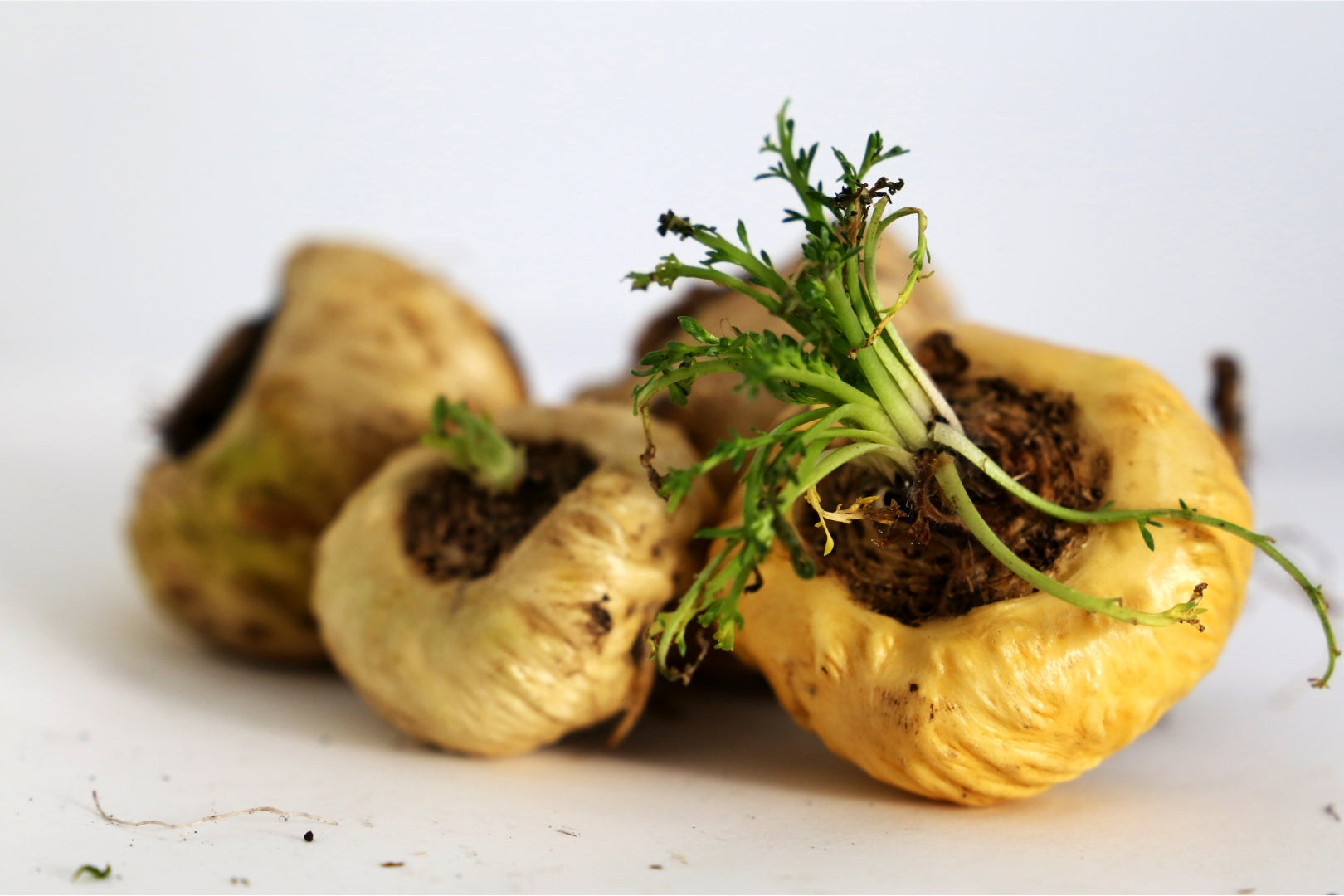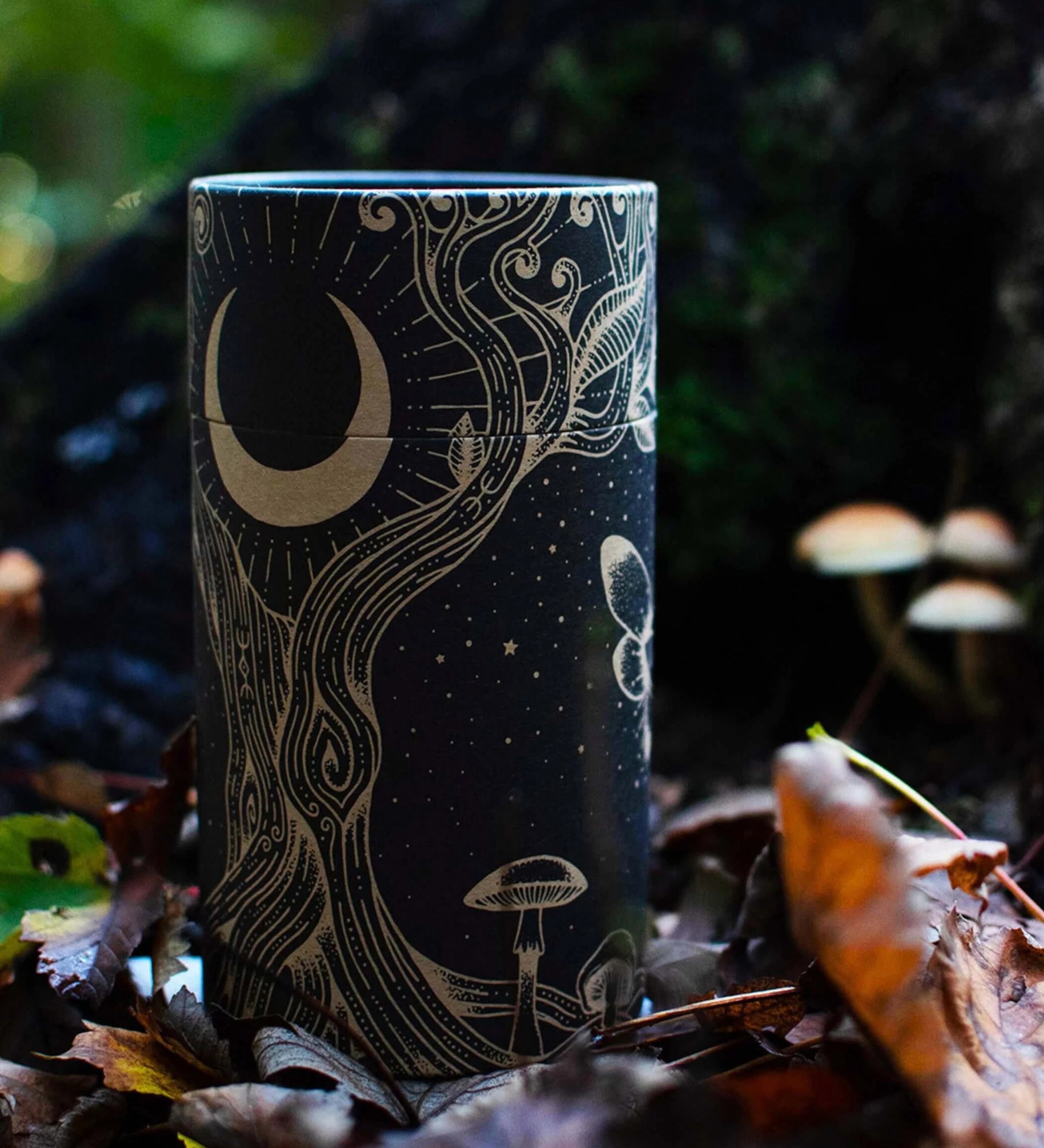Maca - The adaptogenic root from the Andes

The root from the Andes
Maca or Peruvian ginseng is a plant that grows in the Andes in Peru . The root of this plant has been consumed by the indigenous peoples there for centuries and is often referred to as a "superfood" because it contains a variety of nutrients, including vitamin C, iron and calcium . Maca is consumed in various ways, for example as powder, capsules or in dried form. There are different types of maca roots, which differ mainly in their color, from white to yellow to black. 
The effects of Maca powder
Scientific experiments have shown that maca has nutritional, energizing and fertility-enhancing properties and may help with sexual dysfunction, osteoporosis, memory and learning problems, and protect the skin from ultraviolet radiation (1.).
The traditional use of maca
In addition, a recent study examined the health status of a population in the Peruvian Central Andes (Carhuamayo, 4100 m) that traditionally consumes maca and compared it with a population of the same location that does not consume maca. The study looked at maca consumption, health status and fractures in men and women aged 35 to 75. Liver and kidney functions as well as hemoglobin levels were examined in a sample. In the group studied, 80% consumed maca.
In this group, maca has been used since childhood, consumed primarily as juice, and is associated with generally higher health status ratings , lower rates of bone fractures, and lower rates of signs and symptoms of chronic altitude sickness, similar effects which the Cordyceps mushroom shows, for example. Additionally, maca consumption is associated with low body mass index and low blood pressure (5.).
Maca active ingredients
The most well-known compounds in maca include macamides , a group of fatty acid lipids. These compounds appear to act on a widespread signaling system known as the endocannabinoid system (ECB).
Macamides inhibit the breakdown of anandamide by inhibiting fatty acid amide hydrolase (FAAH). Anandamide acts on the cannabinoid receptor CB1 . Maca's effects on mood may be related to its role on the CB1 receptor, as other FAAH inhibitors have been shown to act as antidepressants by improving central serotonin and norepinephrine transmission and promoting neurogenesis, the formation of new nerve cells in the hippocampus (1 .)
The endocannabinoid system
The endocannabinoid system (ECS) is a complex network of receptors and signaling molecules that is present in all mammals. It is involved in a variety of physiological processes including pain, mood, appetite and memory . The ECS is named after the cannabis plant, which is the source of the compounds called cannabinoids that activate the system. However, the body produces its own cannabinoids, called endocannabinoids , which are involved in the same processes as those derived from cannabis.
The ECS is composed of two main types of receptors: CB1 and CB2 . These receptors are found on the surface of cells throughout the body, including in the brain , immune system , and organs . CB1 receptors are found primarily in the central nervous system , while CB2 receptors are primarily found in the immune system .

Endocannabinoids are produced by the body when needed and bind to these receptors to regulate various functions. The best-known endocannabinoid is anandamide , which is involved in regulating pain, appetite and mood . Another important endocannabinoid is 2-arachidonoylglycerol (2-AG), which is involved in immune system function and inflammation.
The ECS plays a role in many physiological processes including:
-
Pain: The ECS is involved in modulating pain perception. Endocannabinoids bind to receptors in the nervous system to reduce the transmission of pain signals.
-
Mood : The ECS is involved in regulating mood and stress response. Anandamide in particular is believed to play a role in regulating mood and anxiety.
-
Appetite: The ECS is involved in regulating appetite and food intake. Endocannabinoids bind to receptors in the brain to stimulate appetite and increase food intake.
- Memory: The ECS is involved in the formation and consolidation of memories. Endocannabinoids bind to receptors in the brain to influence the consolidation of memories.
The ECS is also involved in regulating sleep, fertility and bone density .
There is evidence that the ECS may be involved in the development of certain diseases such as obesity, diabetes and addiction . Research continues to better understand the role of the ECS in these diseases and to develop therapies that target the ECS.
In summary, the endocannabinoid system is a complex network of receptors and signaling molecules that is involved in a variety of physiological processes. Understanding the ECS and how it works can lead to the development of new treatments for a range of diseases and conditions.
How does Maca affect the psyche?
A 2018 study showed that maca can improve the mood of people with mild depression. Sexual dysfunctions specifically caused by depression could also be improved (2.).
Maca, blood pressure, cholesterol
There are also some reports that maca can help lower blood pressure and lower cholesterol. A 2014 study showed that maca can lower blood pressure in people with mild hypertension, but further studies are needed to confirm these results (3.).
Maca and improving sexual function
Maca is often promoted as a natural remedy for improving fertility in men and women. While there is little scientific research to support these claims, a 2010 study showed that maca can improve sperm production in men. There are also reports that maca can improve fertility in women by keeping hormone levels balanced (2nd - 4th).
Using Maca for menopausal symptoms
It is believed that maca can also have a positive effect on menopausal symptoms as it can counteract hormonal imbalances and improve mood. Some studies have shown that maca can improve symptoms of menopausal symptoms such as hot flashes, sleep problems and mood swings (3-4).
When should maca not be taken?
Although maca is considered a safe dietary supplement, there are some possible side effects that should be kept in mind. Some people report stomach upset, headaches, or trouble sleeping after taking maca. It's also possible that maca may interact with certain medications, particularly blood pressure medications. It is important to speak to a healthcare professional before taking maca if you are taking certain medications or have a specific medical condition.
What does maca taste like?
Maca tastes sweet and tart with a slight hint of vegetables. It goes great with cinnamon or as an ingredient in smoothies. We like to eat porridge with cinnamon and maca and have therefore developed the Protein Goatmeal in the flavor “Maca Cinnamon Roll” .
Sources
1. Gonzales GF. Ethnobiology and Ethnopharmacology of Lepidium meyenii (Maca), a Plant from the Peruvian Highlands. Evid Based Complement Alternat Med. 2012;2012:193496. doi: 10.1155/2012/193496. Epub 2011 Oct 2. PMID: 21977053; PMCID: PMC3184420.
https://www.ncbi.nlm.nih.gov/pmc/articles/PMC3184420/
2. A Systematic Review on the Effect of Nutraceuticals on Antidepressant-Induced Sexual Dysfunctions: From Basic Principles to Clinical Applications https://www.mdpi.com/1467-3045/44/8/230
3. Maca reduces blood pressure and depression, in a pilot study in postmenopausal women
https://www.tandfonline.com/doi/full/10.3109/13697137.2014.929649
4. A Systematic Review of the versatile effects of the Peruvian Maca Root (Lepidium meyenii) on sexual dysfunction, menopausal symptoms and related conditions. https://www.sciencedirect.com/science/article/pii/S2667031322001075#bbib0071
5. Role of maca (Lepidium meyenii) consumption on serum interleukin-6 levels and health status in populations living in the Peruvian central Andes over 4000 m of altitude. https://www.ncbi.nlm.nih.gov/pmc/articles/PMC3856628/
0 comments







